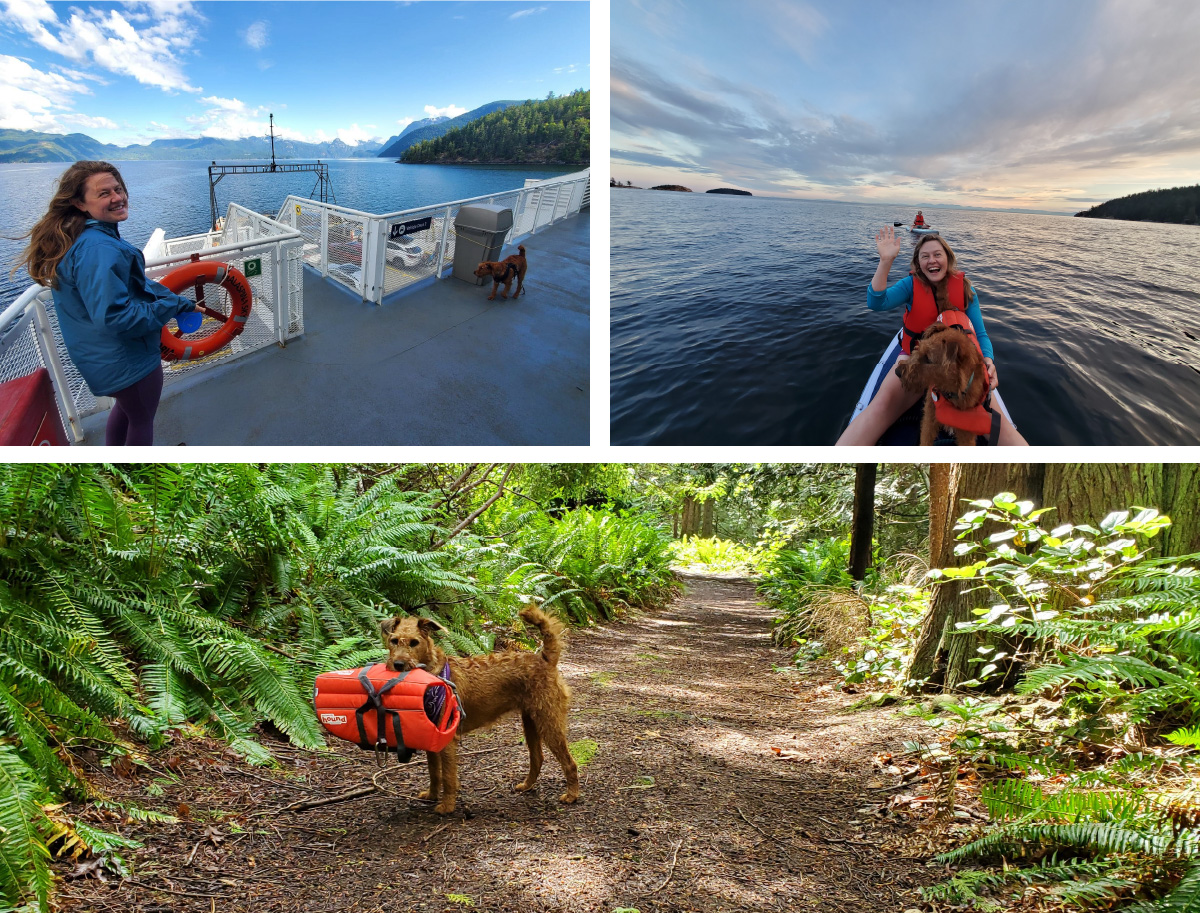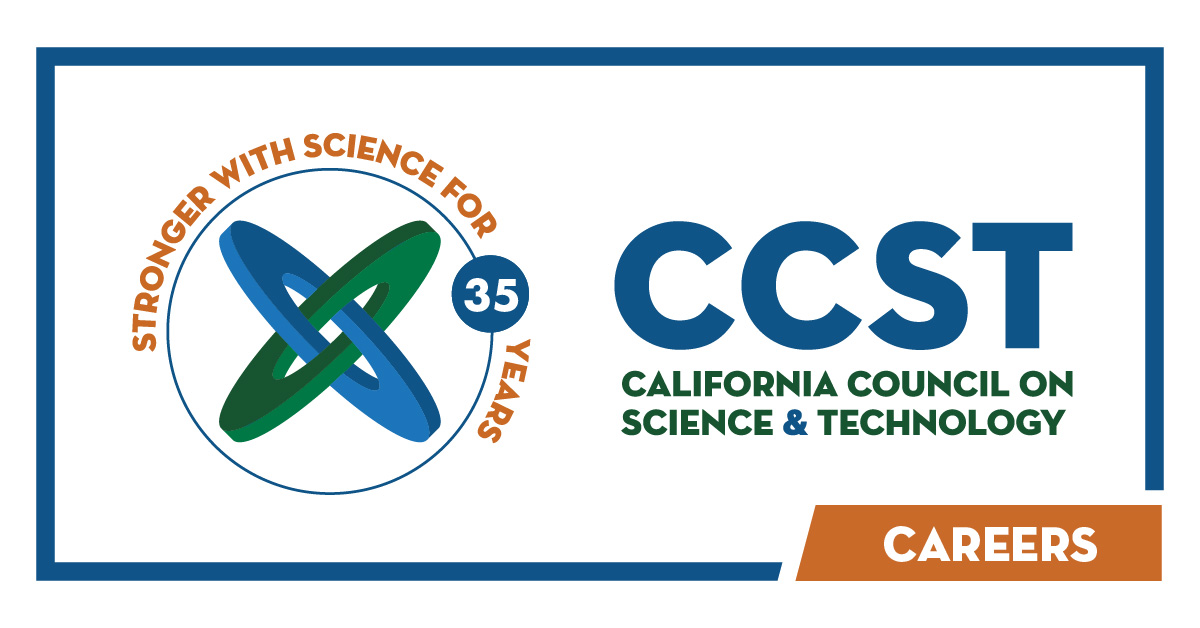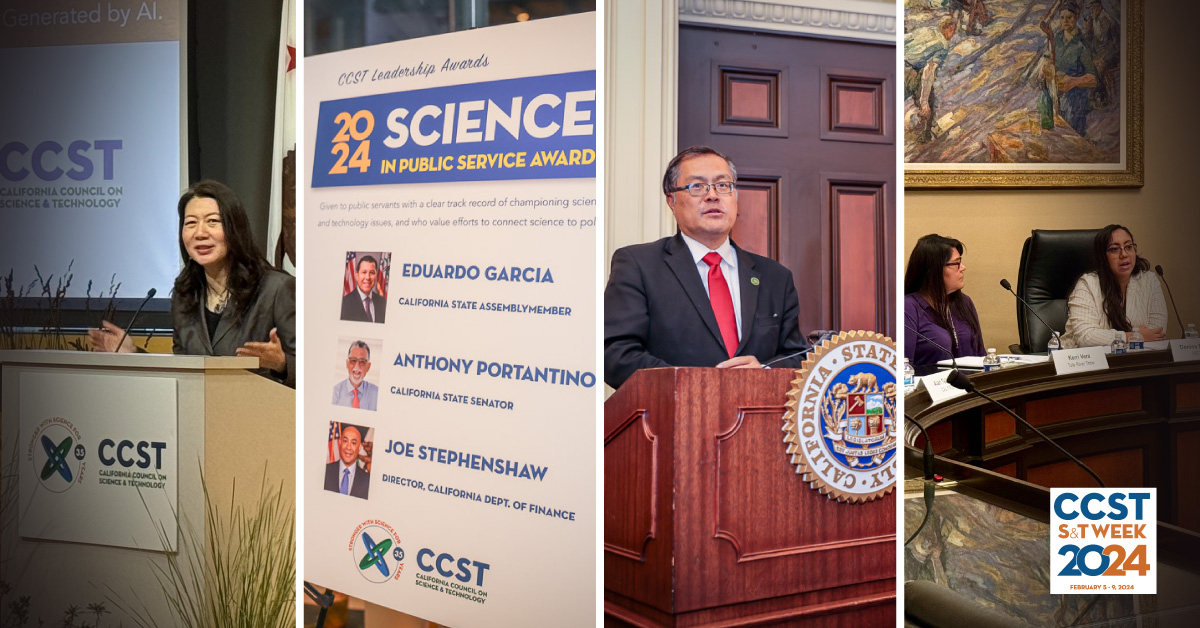Bee-yond the Lab Bench: From PhD to Sustainable Pest Management Policy
May 10, 2023 | CCST Newsroom, CCST S&T Policy Fellows | Contact: Mikel Shybut

I am not a planner.
Looking at my CV, it may seem like I was always intent on science policy, but in graduate school I did not have a five-year plan, let alone a singular career trajectory in mind. Instead, I found my way by staying curious and trying new things. My advice for PhDs is to do the same; explore beyond the lab bench. If your journey is like mine, a small step in a new direction can snowball, leading you somewhere exciting and unexpected.
Here is how noncommittal exploration led me from academia to the California state government:
How My Scientific Interests Snowballed into Policy
As a scientist, I am motivated by the potential for new discoveries to facilitate positive change.
Most recently, I worked on developing tools to promote bumblebee conservation. I used both natural and synthetic rodent odorants to help guide queen bees to and establish colonies in artificial nesting boxes, with encouraging (dare I say, buzz-worthy?) results.

Initially, my graduate research focused on creating environmentally friendly alternatives to second generation anticoagulant rodenticides (SGARs). SGARs are frequently used to control rodents, but they broadly poison wildlife and can threaten species at the population level.
During the coursework of my PhD, I learned that viable alternatives to SGARs already exist. Specifically Integrated Pest Management (IPM) which is a decision-making hierarchy that prioritizes low-risk control methods, such as sanitation and exclusion, before resorting to chemical pesticides. The issue was one of implementation rather than a deficit of tools.
If your journey is like mine, a small step in a new direction can snowball, leading you somewhere exciting and unexpected.
With that, I saw an opportunity. I took what felt like a small step at the time and wove the benefits of IPM into an upcoming presentation. Afterwards, things began to snowball. Soon, I was presenting to Pest Management professionals and writing policy memos to local governments on how IPM is a viable alternative to permanent SGAR bait stations.
Before I knew it, I had become a vocal proponent of IPM. I worked with advocacy groups and addressed the concerns of California and British Columbia policy makers which helped pass state and provincial moratoriums of use on SGARs.
Around the same time, I took small steps to explore other new realms including equity, diversity, and inclusion work in my department and in my teaching practices as well as participating in my university’s Three Minute Thesis challenge. Similar to my outreach work on IPM, these efforts snowballed and turned into new passions and opportunities I did not expect at the outset.

Embracing the Leap from PhD to Policy
After seeing my policy work create tangible impacts, I was hooked. I keep exploring the policy world beyond my lab work, and pursued the CCST S&T Policy Fellowship.
Upon arriving in Sacramento and completing our monthlong training boot-camp on California policy processes, I was placed in the California Department of Pesticide Regulation (CDPR). Now, mere months after defending my PhD thesis, I am involved in California’s reevaluation process for SGARs, meeting with stakeholders, reviewing the science, and helping determine and create mitigation measures. My journey has come full circle and has new and exciting initiatives to strive for. CDPR recently introduced the Sustainable Pest Management (SPM) Roadmap. SPM builds on IPM towards a holistic, whole-system approach for agricultural and managed ecosystems including urban and rural communities.
When I began promoting IPM as a PhD student, I never imagined it would lead to this incredible opportunity: leveraging my previous research and expertise in integrated pest management to help create SGAR mitigations and begin working towards the adoption of SPM as the de facto pest management system in California, the fifth largest global economy. This is a testament to the benefits of branching out beyond the lab — you never know how quickly small steps will snowball and the exciting places they may take you.
—
Note: The views reflected in this blog piece are Dr. Varner’s individual views and do not reflect those of the Department of Pesticide Regulation.
About the CCST Science & Technology Policy Fellowship
The CCST Science & Technology Policy Fellows program places PhD-level scientists, engineers, and social scientists in the California State Legislature, State Agencies, and Offices of the Governor for a year of public policy, leadership training, and public service—training scientific thinkers to be policy-savvy, while helping equip California’s decision makers with science-savvy staff. Discover how our CCST S&T Policy Fellows make a difference in California’s policy arena and learn how to apply at CCST.us/CCST-Science-Fellows-Program.






